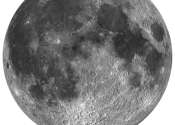Tiny moon shadows may harbor hidden stores of ice
Hidden pockets of water could be much more common on the surface of the moon than scientists once suspected, according to new research led by the University of Colorado Boulder. In some cases, these tiny patches of ice might ...









